Old-Fashioned Oatmeal Molasses Brown Bread || Nova Scotia Brown Bread
By Rebecca St.Clair
Oatmeal molasses brown bread is a delicious and flavourful bread. This vintage bread was popular on the East Coast. As this original recipe is for Nova Scotia brown bread. It is often served with a generous helping of butter and baked beans or with just about anything you could want to use bread for!
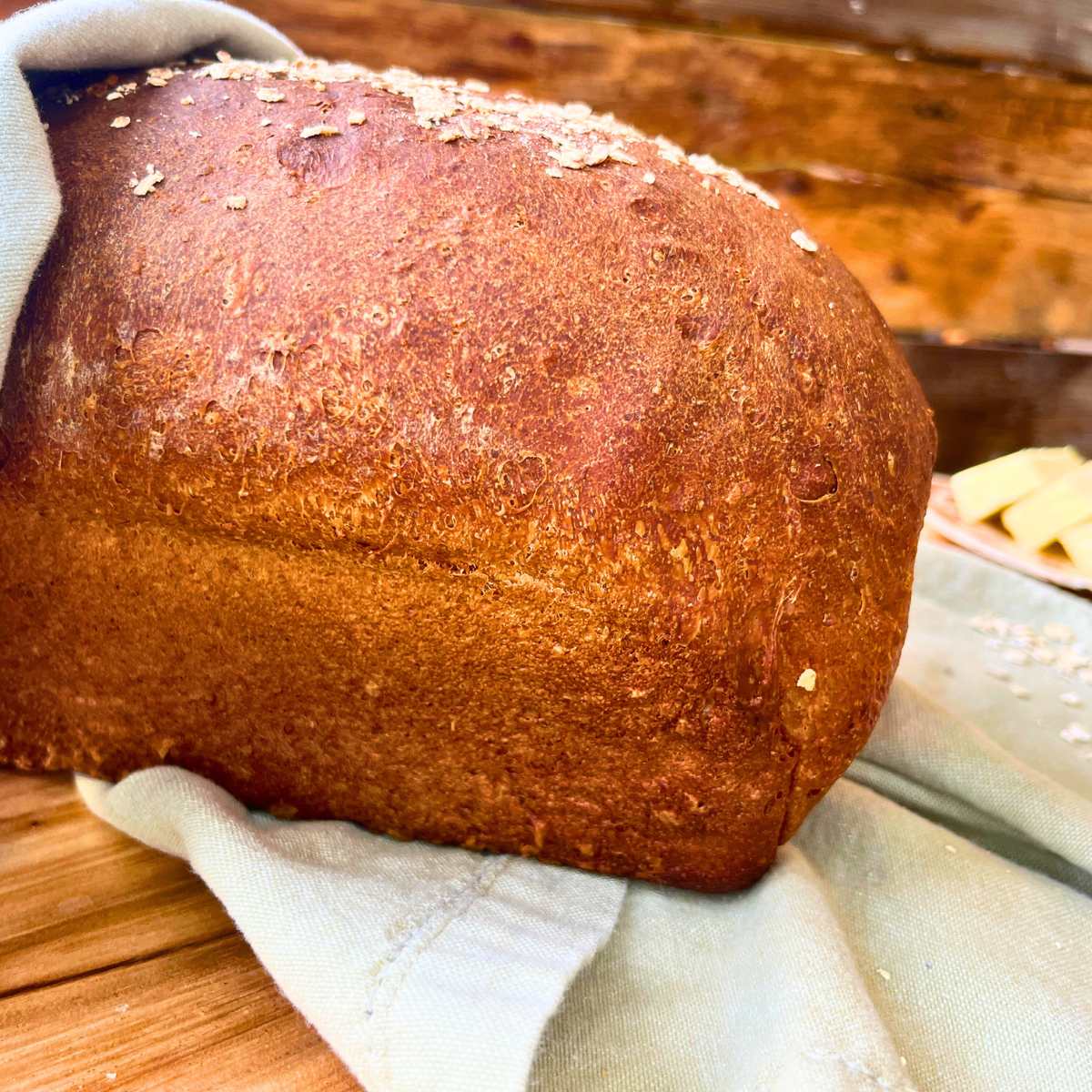
Now, molasses bread can be found all over. It’s popularity, due to simplicity and unique flavour, has made it’s way to most parts of Canada, and versions of it in many other countries too!
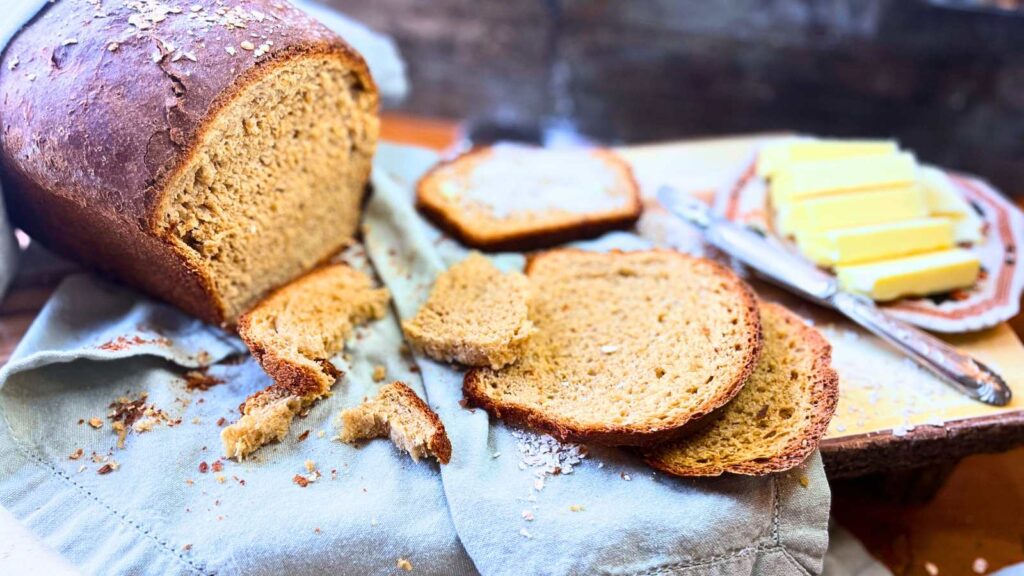
The Molasses
There are a few different types of molasses, which can make things a little confusing when you are at the store.
In the stores, where I live, there are two main types of molasses, fancy molasses and blackstrap molasses. For most baking recipe, like bread, cookies, etc., fancy molasses (sometime called light molasses), is what should be used.
Molasses is a byproduct of making sugar from sugarcane. Fancy molasses is from the second boiling, where as blackstrap molasses is from the third. Fancy molasses is much lighter tasting. Where as blackstrap is quite bitter. Blackstrap is good in things like barbecue sauce, where you want a stronger smoky flavour.
Substituting one for the other will definitely impact the overall taste of your recipe in the end.
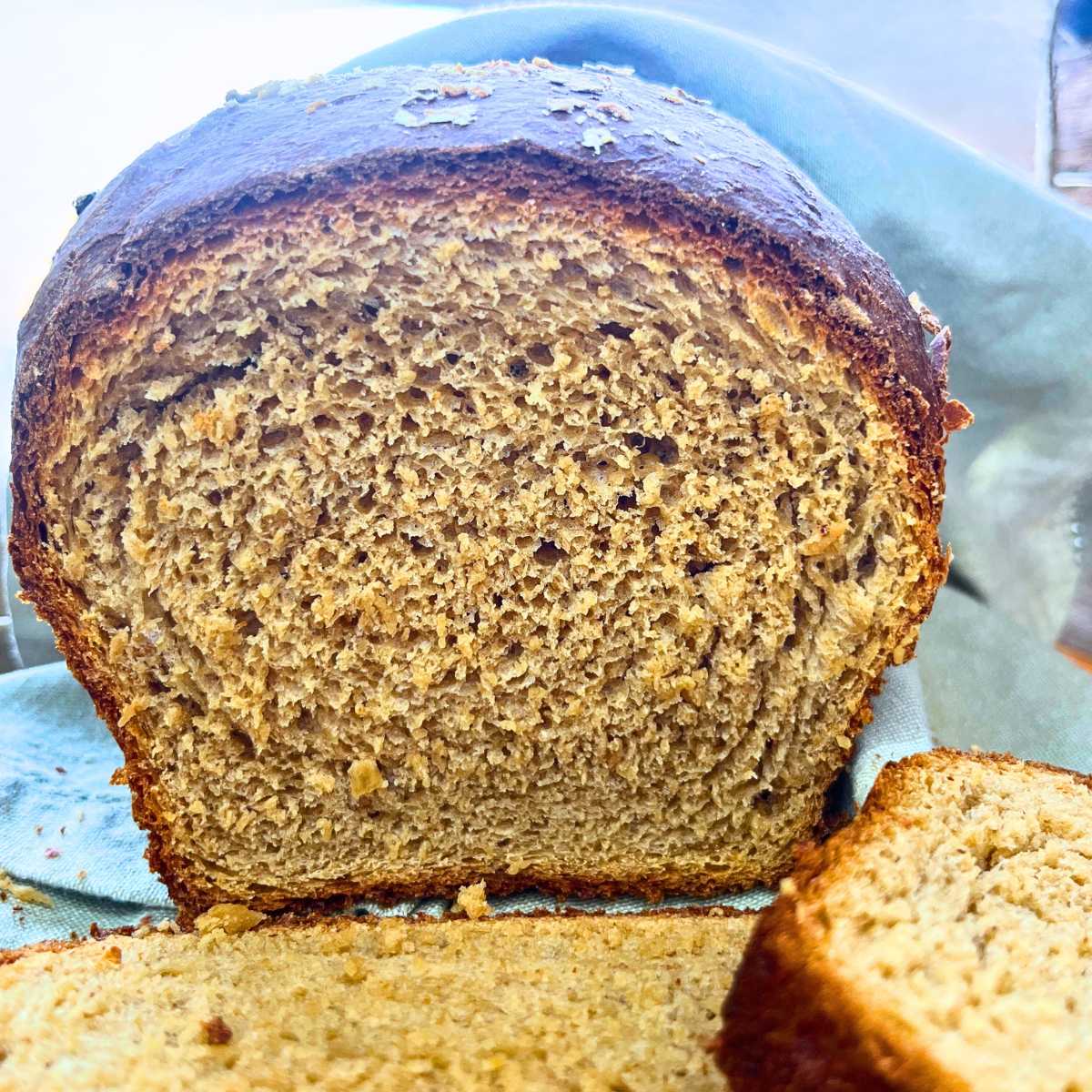
Why add molasses to bread?
There are a few different qualities that molasses brings to bread and baking in general.
- The most noticeable is the colour. Molasses is very dark in colour, and will quickly change the colour of whatever you are making. Even in small amounts, the dark reddish brown molasses will change your baked good to a gorgeous rich caramel. (Think gingerbread)
- Sweetness. Molasses has a subtly sweet flavour, as it is a byproduct of sugar making.
- Flavour. Molasses has an array of flavour notes that add so much complexity to your baking, from smoky to caramel.
- Moisture. Adding molasses to baked goods helps to provide and retain moisture in the final product. It also adds tenderness and pliability to things like cookies.
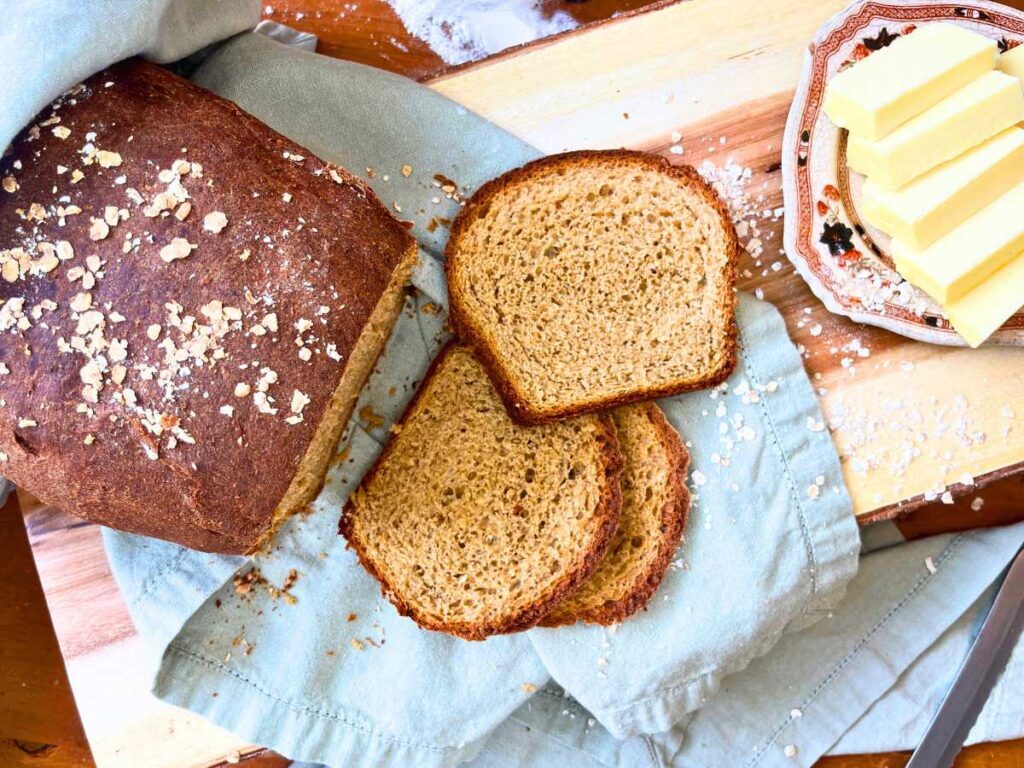
Why You’ll Love This Recipe
Unique flavour – The unique flavour of this recipe if from the molasses, which also adds the distinct colour.
Versatile – This bread loaf can be used from anything from slicing for sandwiches, to dipping in soups, or making French toast. Just about anything you would use your everyday bread, this bread can be used.
Make ahead – Molasses brown bread freezes extremely well. Preslice your bread before freezing. Pop each slice directly into the toaster for bread that lasts for months at a time.
Simple Recipe – This recipe is made with only a handful of simple ingredients.
Texture – This bread is soft pillowy, while still having a lovely hearty texture from the addition of whole wheat flour and oats.

Oatmeal molasses brown bread in the bread machine
Bread machines are a great time saver. You put your ingredients in and a beautiful bread loaf comes out. Just like magic!
Place the ingredients in the pan of your bread machine, in the order according to the manufacturers directions. Pick the white bread setting to fully make and bake it in the machine.
Overnight oatmeal molasses brown bread
One of the simple pleasures in life is having fresh baked bread for breakfast. The flavour of this bread is absolutely perfect for a breakfast meal. To make this possible, without waking up hours in advance,make the bread the night before.
Form the dough and place it in the loaf pans. Then let them have their final rise, in the refrigerator, overnight. The cold temperature slows down the time needed for the bread to rise.
You may only need an hour for your bread to rise in a warm spot. However, if you let the bread rise in the cold, it can sit there and slowly rise overnight.
This slow rise can even improve the breads texture! Take the bread out of the refrigerator in the morning and bake. Enjoy your fresh baked bread for breakfast!
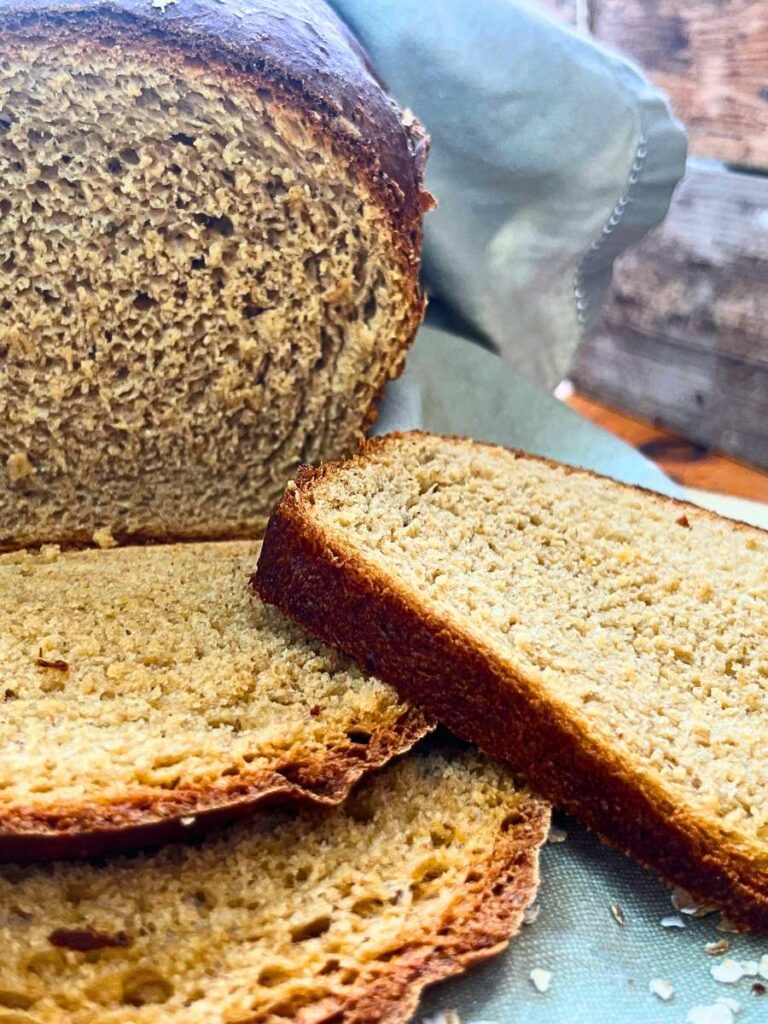
Storing oatmeal molasses brown bread
At room temperature
Fresh molasses bread is best stored, wrapped in paper, on the counter top for 2-3 days. Bread starts to loose it’s moisture and becomes stale the longer it is left out.
The freezer
The freezer is the best choice for storing bread, if you want to extend it’s life. You can either store it whole or sliced.
Let the bread cool to room temperature and wrap completely in plastic wrap or a bread bag. Store in the freezer for up to 3 months.
When you are ready to use your bread, unwrap and let it come back up to room temperature.
If you want to warm your whole loaf up, to get more of that fresh baked bread taste, place the loaf in a preheated 325 °F (160 °C) oven for 20-25 minutes.
If you have frozen your bread sliced, the slices can go straight from the freezer to the toaster!
Ingredients
Molasses – Not only does it add the unique colour, this adds a rich caramel flavour and added moisture to the bread.
Flour – This recipe uses a mixture of white and whole wheat flour for an added hearty texture.
Yeast – Yeast is what makes the bread dough rise.
Oats – Not only for added nutrition, oats give a chewy texture while making a moist and soft loaf.
Butter – Gives a higher rise to the bread while helping to create a softer tender loaf.
Salt – Adds flavour
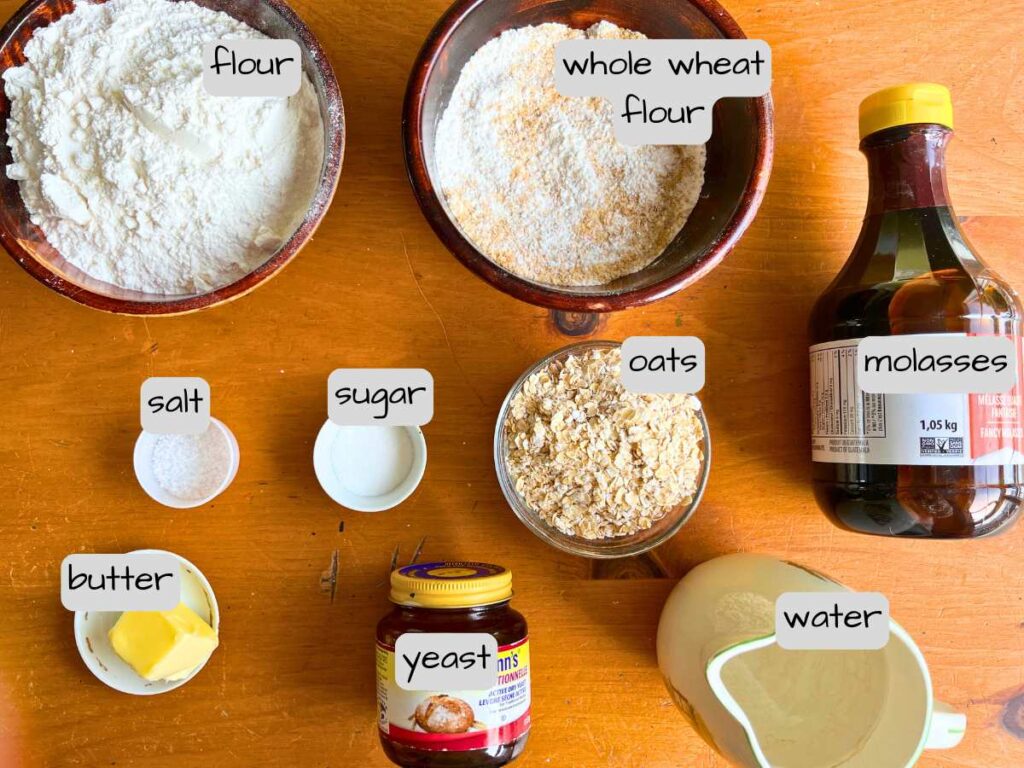
Method
Mixing and kneading the dough
- In the bowl of a stand mixer, or a large bowl by hand, add in the warm water, sugar, and yeast.
- Set this aside for a few minutes for the yeast to soften and become foamy. This should take about 5 to 10 minutes.
- Add in the oats, butter, molasses, salt. Stir to combine.

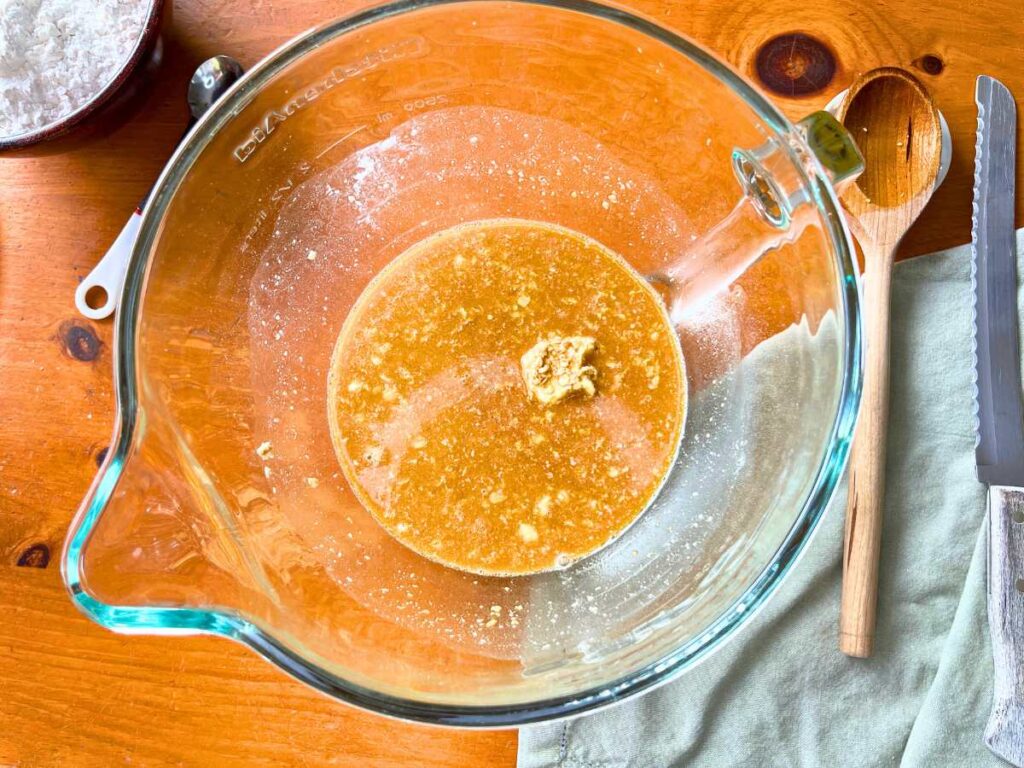
4. Mix in the whole wheat flour.
5. Add in the all-purpose flour and knead for 5 minutes, if using a stand mixer. If kneading by hand, knead 8-10 minutes, or until you have a smooth soft dough ball.
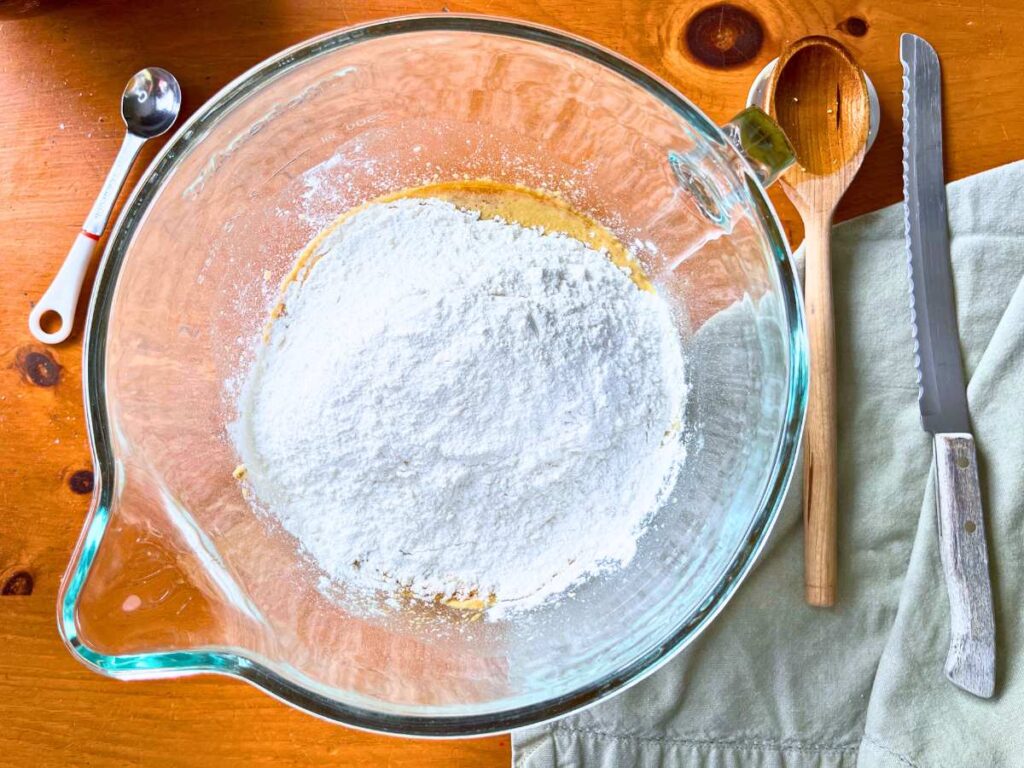
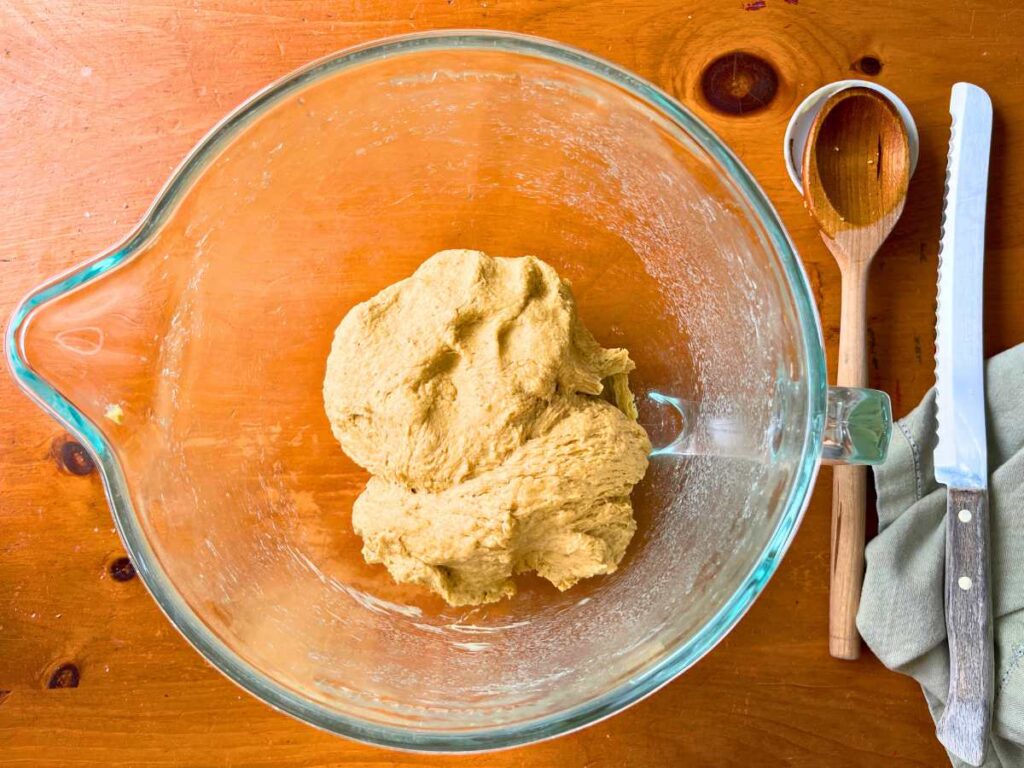
First rise and shaping
- Add a drizzle of oil to a large bowl and turn the dough around a few times in the oil to coat it.
- Cover the bowl with plastic wrap or a damp cloth. Let it rise, in a warm spot, until it has doubled. (About 1- 1, ½ hours, depending on the temperature of your kitchen.)
- When the dough has risen, tip it out onto a lightly floured surface.
- Form the dough into a loaf shape. I do this by flattening the dough, folding it in thirds like a letter going into an envelope. Then, roll it up the opposite way, pressing it together as you roll to seal the loaf. Pinch the dough together on each end.
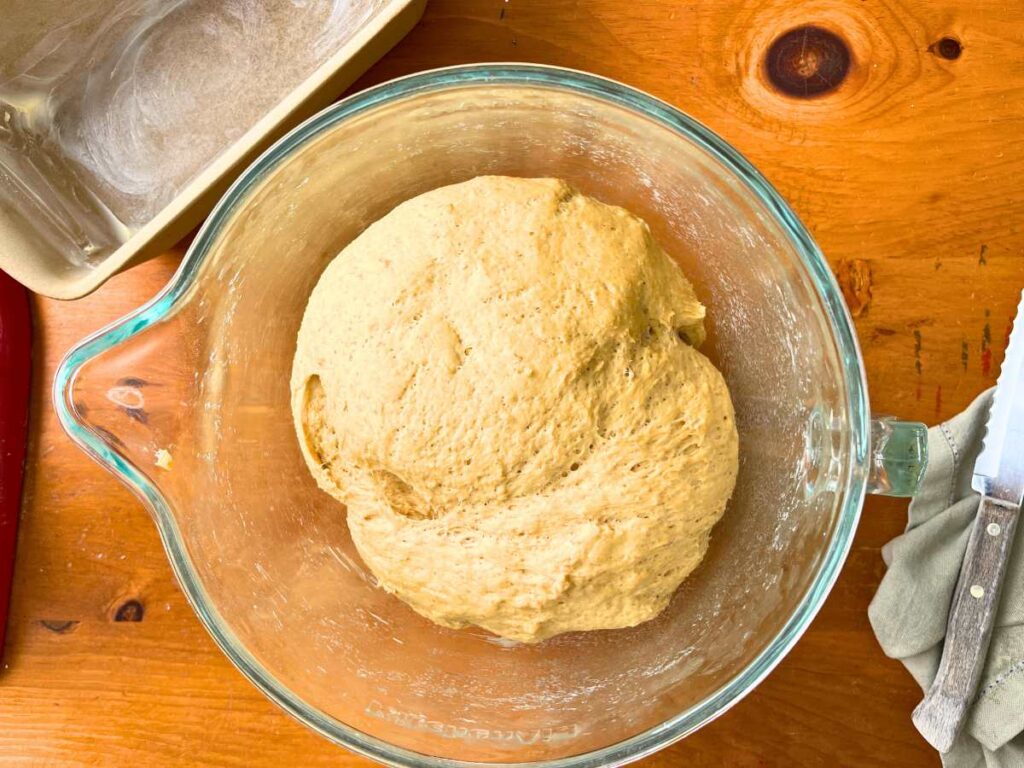

Final rise and baking
- Place the dough into a greased loaf pan. Allow to rise, in a warm place, until doubled. Which should take about 45 mins to 1 hour, depending on the temperature of your kitchen.
- Meanwhile, preheat the oven to 375 °F (190 °C).
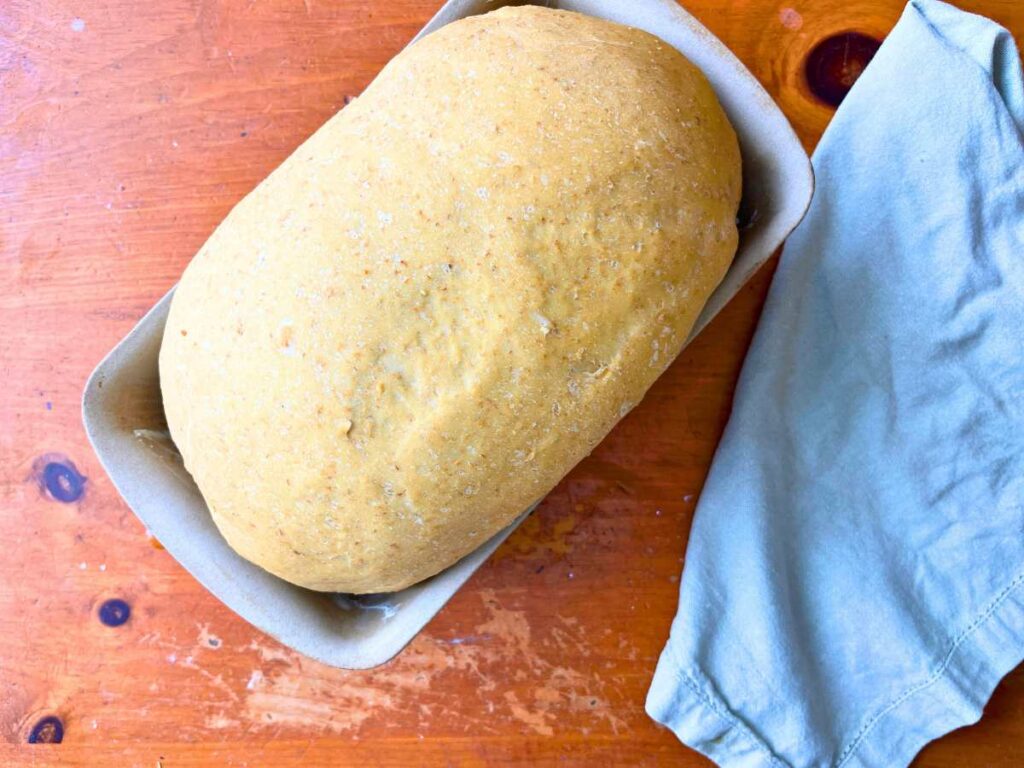
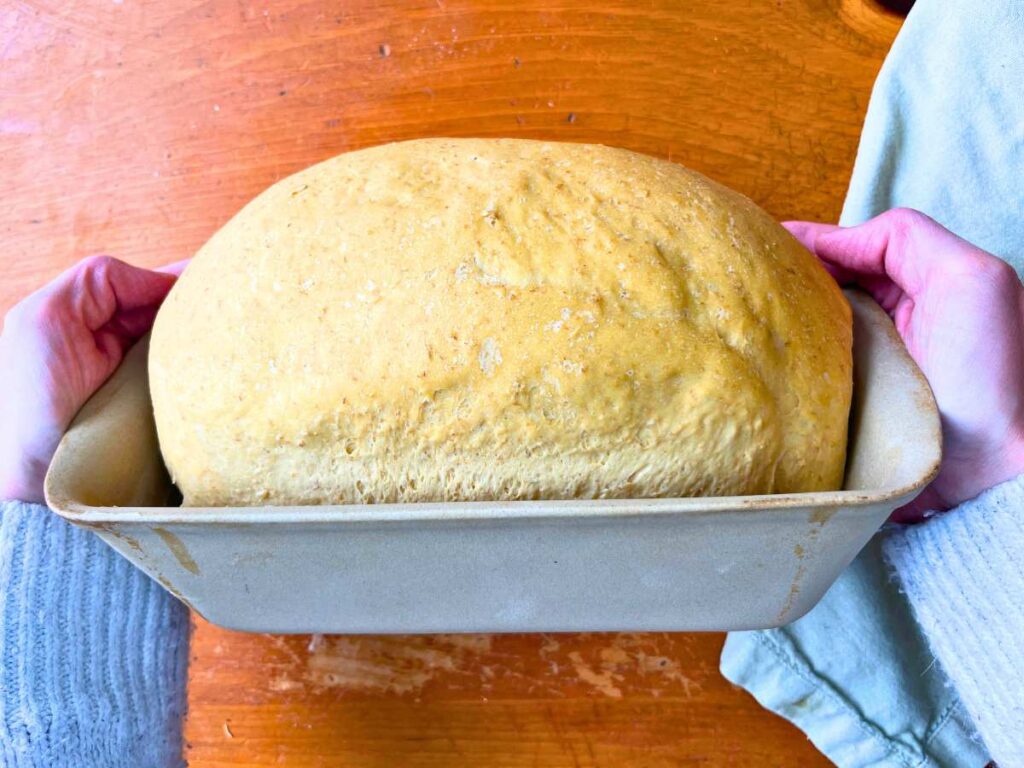
3. Once the dough has risen, brush the top lightly with water and sprinkle on some oat flakes for decoration. (Optional)
4. Bake for 1 hour. Or until the bread is browned and sounds hollow when you tap on it.



Oatmeal Molasses Brown Bread (Nova Scotia Brown Bread)
This hardy flavourful bread, is a classic on the East Coast. Now loved all over, due to it's simplicity, depth of flavour, and rich caramel colour.
Ingredients
- ½ cup rolled oats 50 g
- 1 Tablespoon butter 15 g
- 1 ½ cup warm water 375 m
- ½ teaspoon sugar 2 g
- 2 ¼ teaspoons dry active yeast (or one envelope) 7 g
- ¼ cup fancy molasses 60 ml
- 1 teaspoon salt 5 g
- 1 cup whole wheat flour 120 g
- 2 cups all-purpose flour 300 g
Instructions
Mixing and kneading the dough
- In the bowl of a stand mixer, or a large bowl by hand, add in the warm water, sugar, and yeast.
- Set this aside for a few minutes for the yeast to soften and become foamy. This should take about 5 to 10 minutes.
- Add in the oats, butter, molasses, salt. Stir to combine.
- Mix in the whole wheat flour.
- Add in the all-purpose flour and knead for 5 minutes, if using a stand mixer. If kneading by hand, knead 8-10 minutes, or until you have a smooth soft dough ball.
First rise and shaping
- Add a drizzle of oil to a large bowl and turn the dough around a few times in the oil to coat it.
- Cover the bowl with plastic wrap or a damp cloth. Let it rise, in a warm spot, until it has doubled. (About 1- 1, ½ hours, depending on the temperature of your kitchen.)
- When the dough has risen, tip it out onto a lightly floured surface.
- Form the dough into a loaf shape. I do this by flattening the dough, folding it in thirds like a letter going into an envelope. Then, roll it up the opposite way, pressing it together as you roll to seal the loaf. Pinch the dough together on each end.
Final rise and baking
- Place the dough into a greased loaf pan. Allow to rise, in a warm place, until doubled. Which should take about 45 mins to 1 hour, depending on the temperature of your kitchen.
- Meanwhile, preheat the oven to 375 °F (190 °C).
- Once the dough has risen, brush the top lightly with water and sprinkle on some oat flakes for decoration. (Optional)
- Bake for 1 hour. Or until the bread is browned and sounds hollow when you tap on it.
Nutrition Information
Yield
12Serving Size
1Amount Per Serving Calories 171Total Fat 2gSaturated Fat 1gTrans Fat 0gUnsaturated Fat 1gCholesterol 3mgSodium 174mgCarbohydrates 35gFiber 2gSugar 6gProtein 4g
Nutrition information isn’t always accurate.
hungy for some more Classically canadian recipes? Hop over here!
Don’t forget to sign up to the FREE subscribers library! Receive all the latest and exclusive content right to your inbox! Plus, gain access to amazing free printables!
Like this one! Creating your own family cookbook has never been easier!
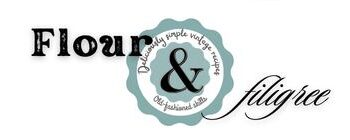
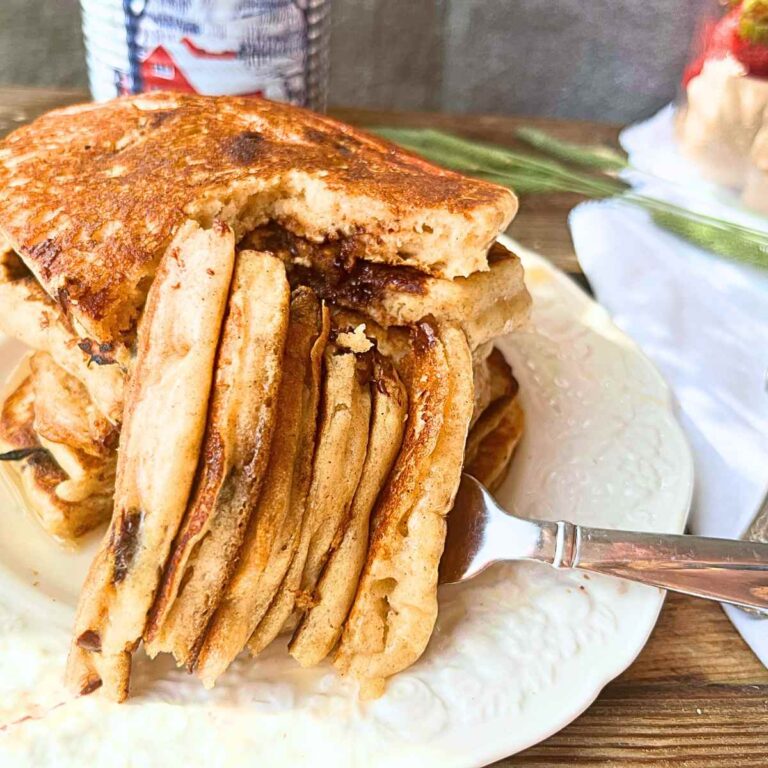

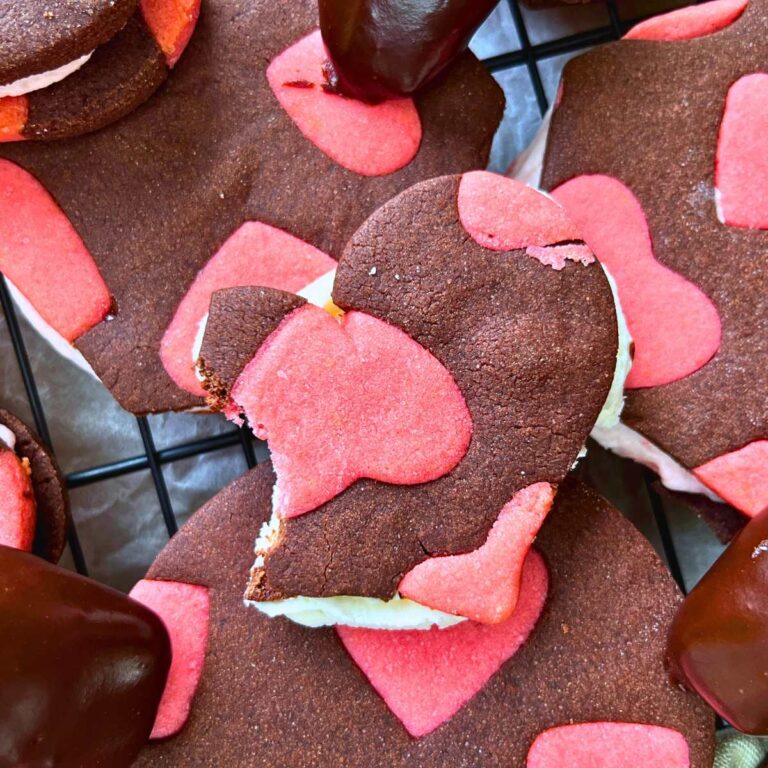

2 Comments